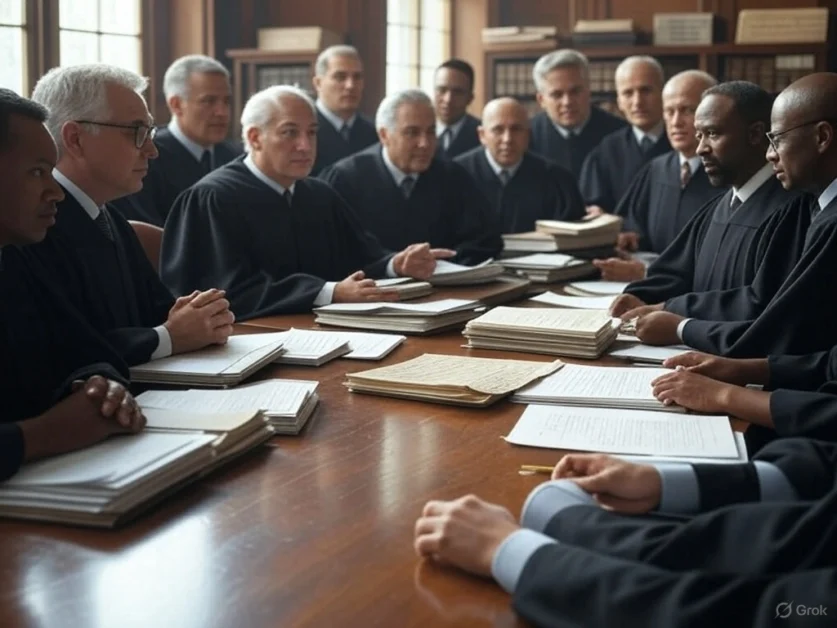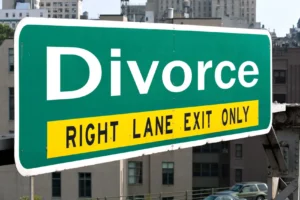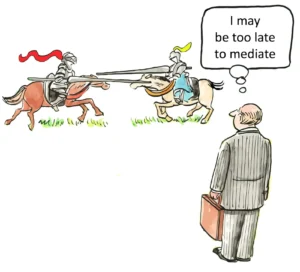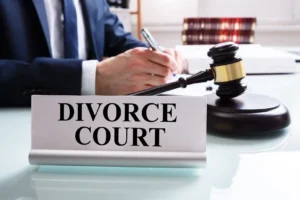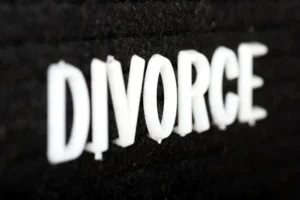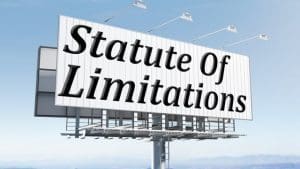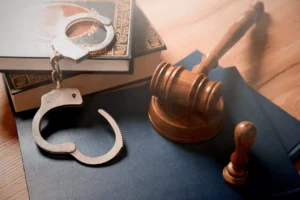How Federal Judges Are Responding to Presidential Overreach Claims
The constitutional tension between executive authority and judicial oversight has reached unprecedented levels as federal judges across the nation respond to claims of presidential overreach with a flurry of injunctions and rulings. Since President Trump’s return to office in January 2025, the judiciary has emerged as the primary institutional check against what many legal scholars characterize as an extraordinarily aggressive assertion of executive power. This judicial response reflects the fundamental constitutional principle that even presidential authority has limits—limits that federal courts are constitutionally empowered and obligated to enforce.
The scope and pace of judicial intervention have been remarkable, with lower courts imposing 15 nationwide injunctions against the current Trump administration in just the first few months of 2025. This represents a significant increase compared to historical precedents—six during George W. Bush’s eight years, 12 during Barack Obama’s eight years, and 14 during Joe Biden’s four-year term. While defenders of these judicial actions view them as necessary safeguards against executive excess, critics contend that unelected judges are improperly obstructing the agenda of a democratically elected president.
The Constitutional Framework of Judicial Review
The power of federal courts to check presidential authority stems directly from the Constitution’s design of separated powers, where each branch serves as a check on the others. This system reflects the Founders’ deep concern about concentrated power and their determination to prevent any single branch from dominating the government. When presidents issue executive orders that appear to exceed constitutional boundaries, federal judges fulfill their constitutional duty by scrutinizing these actions against established legal principles.
Article III of the Constitution establishes the federal judiciary as an independent branch with the authority to resolve “cases and controversies” arising under federal law. This provision has long been understood to empower federal courts to review the constitutionality of actions taken by the other branches, including presidential directives. The landmark case of Marbury v. Madison cemented this principle of judicial review, establishing that it is “emphatically the province and duty of the judicial department to say what the law is.”
The current wave of judicial interventions against presidential actions reflects this foundational principle in action. Federal judges are not merely exercising a discretionary power but fulfilling their constitutional obligation to ensure that presidential actions remain within legal boundaries. This judicial function becomes particularly crucial when a president advances novel or expansive interpretations of executive authority that test constitutional limits. The current administration’s aggressive use of executive orders has prompted an equally vigorous judicial response, creating a constitutional showdown that tests the resilience of America’s system of checks and balances.
The Pattern of Judicial Responses to Executive Orders
Since January 2025, federal courts have issued rulings on a wide range of executive actions, creating a complex legal landscape that reveals both the breadth of presidential initiatives and the judiciary’s varied responses. These rulings have addressed executive orders concerning birthright citizenship, immigration enforcement, diversity programs, federal workforce reductions, and numerous other policy areas. The pattern of these decisions suggests that courts are particularly skeptical of executive actions that appear to encroach on legislative authority or threaten constitutional rights.
The administration’s attempt to end birthright citizenship through executive order has faced particularly strong judicial resistance. In Casa v. Donald Trump, Judge Deborah Boardman issued a preliminary nationwide injunction blocking implementation of the order, finding that it likely violates the Fourteenth Amendment. Similarly, in Franco Aleman et al. v. Trump, a federal judge in Washington state consolidated multiple challenges to the birthright citizenship order, signaling the judiciary’s concern about executive reinterpretation of constitutional provisions.
Immigration enforcement directives have likewise encountered significant judicial pushback. When the administration attempted to withhold federal funds from sanctuary cities through Executive Order 14159, multiple jurisdictions filed lawsuits challenging the order’s constitutionality. The City and County of San Francisco’s lawsuit argued that the executive order violates multiple constitutional provisions, including the Tenth Amendment’s reservation of powers to the states, separation of powers principles, the Spending Clause, and the Fifth Amendment’s due process protections. These cases reflect a judicial determination to maintain constitutional boundaries around executive authority in immigration policy.
The Controversy Over Nationwide Injunctions
The use of nationwide injunctions by district court judges has emerged as a particularly contentious aspect of the judicial response to presidential actions. These broad remedies allow a single federal judge to halt the implementation of executive policies throughout the entire country, raising questions about whether such power should be wielded by individual district courts rather than appellate courts or the Supreme Court.
Former Speaker of the House Newt Gingrich has been particularly vocal in criticizing this practice, arguing that “the notion that unelected lawyers can micromanage the executive branch and override a commander-in-chief who received 77.3 million votes should trouble every American.” Gingrich has characterized the recent wave of nationwide injunctions as a “potential judicial coup d’etat” and called for Supreme Court Chief Justice John Roberts to institute a policy requiring the Supreme Court to review any nationwide injunctions issued by lower courts.
Republican lawmakers have responded to these concerns with legislative proposals aimed at limiting the power of district courts to issue nationwide injunctions. Representative Darrell Issa introduced a bill that would prevent federal judges from establishing nationwide injunctions, while Senator Chuck Grassley proposed legislation to restrict judicial rulings to only the parties involved rather than allowing universal decisions. Senator Mike Lee’s bill would require a three-judge district court panel to issue nationwide injunctions, with the possibility of direct appeal to the Supreme Court. These legislative efforts reflect growing conservative concern about the judiciary’s power to obstruct presidential initiatives through broad injunctive relief.
Judicial Independence Under Pressure
The escalating conflict between the executive branch and the judiciary has placed significant pressure on judicial independence, raising concerns about the long-term health of constitutional governance. When President Trump called for the impeachment of a federal judge who requested information about his deportation initiatives, many legal scholars viewed this as an unprecedented attack on the separation of powers. Such direct confrontation between branches threatens to undermine the judiciary’s ability to function as an independent check on executive power.
The administration’s response to adverse rulings has sometimes included not just appeals through normal legal channels but also public criticism questioning the legitimacy of judicial authority. After a federal judge blocked DOGE’s access to sensitive Treasury information, Elon Musk wrote on X: “A corrupt judge protecting corruption. He needs to be impeached NOW!” This rhetoric reflects a concerning tendency to personalize institutional conflicts, casting judges who rule against the administration as politically motivated rather than as officials fulfilling their constitutional duties.
The pressure on judicial independence extends beyond rhetoric to include potential structural changes that would alter the relationship between the branches. Some administration allies have advocated for jurisdiction-stripping legislation that would remove certain types of cases from federal court review, while others have suggested court-packing or other institutional reforms that would dilute the judiciary’s independence. These proposals, if implemented, would represent a significant departure from traditional respect for the judiciary’s role in constitutional governance.
The Role of Judicial Appointments and Ideology
The pattern of judicial responses to executive actions has highlighted the significance of judicial appointments and ideological factors in constitutional adjudication. A Harvard Law Review report cited by Newt Gingrich found that 92.2% of the injunctions issued during President Trump’s first term came from judges appointed by Democratic presidents, suggesting a correlation between judicial ideology and willingness to check executive actions.
This pattern has fueled conservative arguments that judicial opposition to the current administration reflects political bias rather than principled legal analysis. Representative Jim Jordan argued that “a single appointed federal judge shouldn’t have the authority to freeze an action taken by the president,” while Representative Darrell Issa contended that “the federal judiciary isn’t interpreting the law, it is impeding the presidency.” These criticisms reflect a view that judges are exceeding their proper role when they block presidential initiatives.
However, defenders of judicial intervention emphasize that the courts are simply fulfilling their constitutional duty to ensure that executive actions comply with statutory and constitutional requirements. Kate Shaw, a law professor at the University of Pennsylvania, testified that “the premise of this hearing that courts have overreached or transcended the limits of their authority and that this overreach calls for some response is badly mistaken.” She argued that the administration “has been on a losing streak in the federal courts” because “many of the challenged actions have been taken without regard for and often with outright contempt for both statutes and the Constitution.”
Legal Challenges to Specific Executive Actions
The administration’s executive orders targeting diversity, equity, and inclusion (DEI) programs have faced particularly strong judicial resistance. U.S. District Judge Adam Abelson granted a preliminary injunction blocking the administration from canceling or altering federal contracts deemed related to equity, finding that these executive orders likely violate constitutional rights, particularly those concerning free speech. This ruling responded to executive orders mandating federal agencies to eliminate all grants and contracts associated with “equity” and requiring federal contractors to affirm that they do not endorse DEI initiatives.
The administration’s attempts to target specific law firms have likewise encountered judicial skepticism. Federal judges in two separate cases temporarily blocked White House efforts to punish the law firms Jenner & Block and WilmerHale, with one judge describing the move as “alarming” and the other labeling it a “constitutional injury.” Judge John Bates granted a temporary restraining order against the administration, finding likely breaches of the First Amendment’s free speech protections and an unconstitutional obstruction of clients’ rights to choose their legal representatives. Judge Richard Leon similarly found that the retaliatory measure against WilmerHale “suppresses speech and legal representation, and it constitutes a constitutional injury.”
Immigration-related executive orders have generated numerous legal challenges, with mixed judicial responses. Judge James Boasberg issued an order finding probable cause that the administration acted with criminal contempt in violating his orders regarding deportation procedures. However, the Supreme Court, in a 5-4 decision, vacated the district court’s temporary restraining orders in one immigration case, holding that the challenge should have been brought as a habeas case where the plaintiffs were in custody at the time.
The Supreme Court’s Emerging Role
As lower courts continue to issue rulings on presidential actions, the Supreme Court has begun to play a crucial role in resolving these constitutional conflicts. The Court’s conservative 6-3 majority, which includes three justices appointed by Trump during his first term, faces the challenging task of balancing respect for executive authority with the judiciary’s duty to enforce constitutional limits.
The Supreme Court has shown a willingness to intervene in some cases while deferring in others. In a 7-2 ruling, the Court temporarily halted the rehiring of probationary employees, allowing the Trump administration to persist in its efforts to downsize the government while eliminating certain federal agencies. The majority concluded that the nonprofit plaintiffs lacked legal standing to pursue the case, with Justices Sotomayor and Brown Jackson dissenting.
However, the Court has not yet ruled on the merits of most challenges to the administration’s actions, leaving significant constitutional questions unresolved. The administration has urged the Supreme Court to limit the ability of federal judges to issue injunctions blocking its actions, setting up a potential showdown over the scope of judicial remedies in cases involving executive power. How the Court ultimately resolves these issues will have profound implications for the balance of power among the branches of government.
The Question of Compliance with Court Orders
Perhaps the most concerning aspect of the current constitutional tension is the question of whether the executive branch will comply with adverse court rulings. While previous administrations have generally respected judicial decisions even when disagreeing with them, some observers have noted signs of potential resistance from the current administration.
Legal scholar Marin Levy has remarked that “this cannot be overstated—up until now we have, in modern times, not had to question whether a presidential administration would comply with a court order.” While administration officials and Justice Department lawyers have denied allegations of noncompliance, and President Trump stated in a Fox News interview that “No, you can’t do that” when asked if he would defy a court order, he added qualifying language about “bad judges” and “rogue judges” that has raised concerns.
Law professor Amanda Frost has identified three thresholds on the path to constitutional crisis: the executive issuing decisions that contravene the law, the judiciary intervening to indicate that the executive is violating legal standards, and finally, the executive disregarding the court’s authority and refusing to comply with its rulings even after exhausting all appeals. While Frost believes the U.S. has not yet reached the third and most dangerous stage, the unprecedented volume and nature of the legal violations suggest that the country may be approaching a constitutional crisis.
The Legislative Branch’s Response
Congress’s response to the constitutional tension between the executive and judicial branches has been largely divided along partisan lines. With Republicans controlling both chambers, congressional oversight of executive actions has been limited, with many Republican lawmakers deferring to presidential authority rather than asserting legislative prerogatives.
Some Republican members of Congress have actively supported efforts to limit judicial review of executive actions. Representative Darrell Issa’s bill to prevent nationwide injunctions and Senator Mike Lee’s “Restraining Judicial Insurrectionists Act of 2025” reflect a view that judges are improperly obstructing the president’s agenda. These legislative proposals would significantly alter the traditional relationship between the branches by restricting judicial remedies in cases challenging executive actions.
Democratic lawmakers, by contrast, have defended judicial intervention as necessary to uphold constitutional principles. Representative Hank Johnson argued that many of Trump’s executive orders “are unlawful or unconstitutional, and the president does not have the power to change the Constitution through executive order, even if his name is Donald Trump.” Democrats have characterized federal judges as “the only defense against Trump’s agenda” given their minority status in Congress.
The Historical Context of Executive-Judicial Tensions
While the current level of conflict between the executive and judicial branches may be unprecedented in some respects, tensions between presidents and courts have recurred throughout American history. Presidents from Thomas Jefferson to Franklin Roosevelt have criticized judicial decisions and sometimes proposed structural reforms to limit judicial power. These historical episodes provide important context for understanding the current constitutional moment.
Law professor Amanda Frost noted that Trump is not the first president to face legal challenges to executive orders. In 2016, a tied Supreme Court vote effectively blocked former President Barack Obama’s executive orders that aimed to grant legal recognition to four million immigrants who had resided in the U.S. for over five years. “Have presidents issued orders that have been held to violate statute or constitutional provisions? Yes, they have,” Frost observed. “Have they issued executive orders that implement laws in ways that courts eventually find violate those laws? Yes, they’ve done that.”
However, Frost highlighted a critical distinction in the current situation: “What’s unprecedented is the sheer volume, and also the fact that the violations are not minor.” This observation suggests that while executive-judicial tensions are not new, the scale and nature of the current conflict may indeed represent a departure from historical norms, requiring careful attention to the preservation of constitutional principles.
The Implications for Constitutional Governance
The ongoing conflict between presidential authority and judicial review raises profound questions about the future of constitutional governance in the United States. If courts consistently invalidate executive actions as unconstitutional, and the executive branch responds by attacking judicial legitimacy or refusing compliance, the system of checks and balances could face its most severe test since the Civil War era.
The judiciary’s response to claims of presidential overreach ultimately serves as a crucial test of whether constitutional limits on executive power remain meaningful in practice. If courts can effectively enforce these limits despite political pressure and criticism, the constitutional system will demonstrate its resilience. If, however, judicial authority is successfully undermined through legislative restrictions, court-packing, jurisdiction-stripping, or simple non-compliance, the balance of power could shift dramatically toward executive dominance.
For the legal community, these developments highlight the essential role of an independent judiciary in maintaining constitutional governance. Attorneys, judges, and legal scholars must continue to defend principled legal analysis against political pressure, ensuring that constitutional adjudication remains focused on legal rather than partisan considerations. The current moment demands not only legal expertise but also civic courage from those entrusted with interpreting and applying the law.
Conclusion
The response of federal judges to claims of presidential overreach represents a critical chapter in American constitutional development. As the judiciary asserts its authority to enforce legal limits on executive power, and the executive branch tests the boundaries of presidential authority, fundamental questions about the separation of powers and constitutional governance come to the fore.
The ultimate resolution of these tensions will depend not only on formal legal doctrines but also on the commitment of officials in all branches to respect constitutional principles even when doing so constrains their immediate policy objectives. The willingness of judges to fulfill their duty to say “what the law is,” the determination of presidents to respect judicial decisions even when disagreeing with them, and the readiness of legislators to defend institutional prerogatives rather than partisan advantages—all these factors will shape the future of American constitutionalism.
As this constitutional drama continues to unfold, the American people must recognize what is at stake: not merely the success or failure of particular policies, but the preservation of a system of limited government in which no individual or institution possesses unchecked power. The judiciary’s response to claims of presidential overreach thus serves as a crucial test of whether the Constitution’s promise of limited government and separated powers remains a living reality in twenty-first century America.
Citations:
- Are Federal Judges Abusing Power Over Trump Executive Orders?
- Trump’s Power Struggle with Courts Risks Constitutional Crisis
- Litigation Tracker: Legal Challenges to Trump Administration Actions
- Law Firms Sue Trump Administration Over Retaliatory Executive Orders
- Judge Blocks Trump’s Executive Order Targeting DEI Programs
- Trump v. US Courts: Are Judges Pushing Back Against Controversial Orders?
- With Sweeping Actions, Trump Tests US Constitutional Order
- Interactive: Tracking All Lawsuits Against the Trump Administration
- Federal Judge Calls Trump’s Order Targeting Law Firm “Shocking”
- Judicial Resistance to Executive Power Overreach: Constitutional Analysis
- What Happens If Trump Defies Court Orders?
- Judges Stymie Trump with Nationwide Orders as Supreme Court Pressure Builds
- Judge Boasberg Blocks Trump’s Use of Alien Enemies Act
- Republicans Target Federal Judges with National Injunctions Legislation
- Is It the Courts’ Job to Check Executive Overreach?
- Fact Sheet: Unlawful Impoundment in President Trump’s Executive Orders
- Vet Trump’s Judicial Picks for Their Views on Presidential Power
- Judicial Review of Presidential Executive Orders: Constitutional Analysis
- Opinion: Trump’s Judicial Nominees Must Be Vetted on Executive Power Views
- ICYMI: Trump Administration’s Attacks on the Legal System
- Judicial Review of Executive Orders: Historical Perspective
- The Extreme Legal Theory Behind Trump’s First Month in Office
- House Approves Bill to Limit Federal Judges’ Nationwide Injunctions
- Congressional Research Service Report on Presidential Executive Orders
- Tracking Trump Administration Litigation: First 100 Days
- Defending Freedom to Vote: Challenging Trump’s Unconstitutional Presidential Overreach
- Trump’s Overreach Risks a Constitutional Crisis
- How Many of Trump’s Executive Orders Are Being Challenged?
- Trump Confronted with Defiance of Court Orders
- Federal Court Issues Preliminary Injunction Against Anti-DEI Executive Orders
- Supreme Court to Consider Limiting Nationwide Injunctions
- ACLU Responds to Trump’s Anti-Voter Executive Order
- Supreme Court Strikes Down Chevron, Curtailing Power of Federal Agencies
- Project 2025 Would Create an Imperial Presidency, Destroying Checks and Balances
- Judge Rips DOJ’s “Woefully Insufficient” Response on Alien Enemies Act
- Trump’s Sweeping Actions Test the US Constitutional Order
